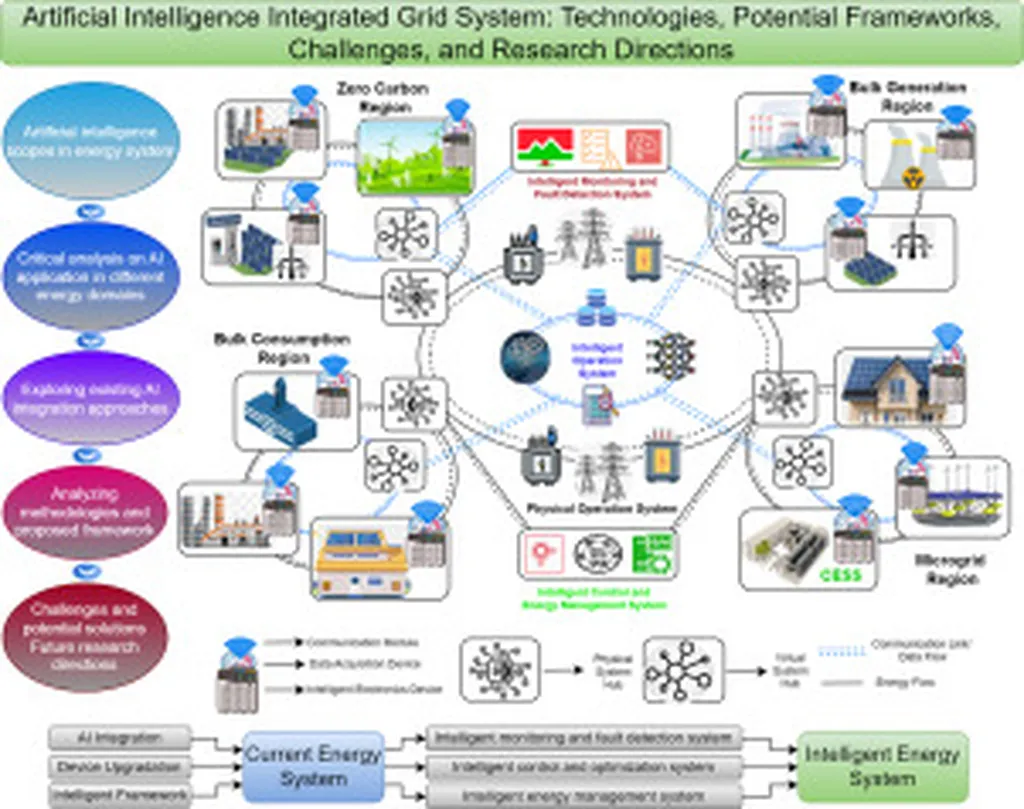In the rapidly evolving world of data science and artificial intelligence, a groundbreaking study has emerged that could significantly impact how industries, including energy, manage and utilize complex data structures. Researchers at the College of Data Science, Taiyuan University of Technology, led by SHEN Weijie, have developed a novel algorithm that promises to revolutionize the way entities are aligned across different knowledge graphs. This advancement could have profound implications for the energy sector, where the integration of diverse data sources is crucial for optimizing operations and decision-making.
Knowledge Representation Learning (KRL) has been a game-changer in cross-language entity alignment, but it has struggled to fully capture the intricate semantic relationships between heterogeneous knowledge graphs. Most existing methods rely on local feature matching, which often overlooks the rich structural information embedded within these graphs. Enter the Entity Alignment algorithm based on Discriminant Multi-feature Fusion (EA-DMF), a cutting-edge approach that leverages semantic, structural, and attribute information to create a more comprehensive and accurate alignment.
“EA-DMF introduces a multi-faceted approach to entity alignment that goes beyond traditional methods,” explains SHEN Weijie. “By integrating the Gromov-Wasserstein distance measure and a random relation walk algorithm, we can enrich the semantic information of entities and extend high-confidence local alignment to a global level. This iterative process allows us to fuse multiple information features and achieve a more precise alignment of entity pairs.”
The implications for the energy sector are vast. Energy companies often deal with multiple data sources, including sensor data, operational logs, and external market information. Integrating these diverse data sets into a unified knowledge graph can provide a holistic view of operations, enabling better decision-making and predictive maintenance. The EA-DMF algorithm could be a key tool in achieving this integration, ensuring that entities across different data sources are accurately aligned and that the resulting knowledge graph is both comprehensive and reliable.
“In the energy sector, the ability to align and integrate diverse data sources is crucial for optimizing operations and improving efficiency,” says SHEN Weijie. “Our algorithm provides a robust solution for this challenge, enabling energy companies to make data-driven decisions with greater confidence.”
The research, published in the journal Taiyuan Ligong Daxue xuebao, which translates to “Journal of Taiyuan University of Technology,” demonstrates the effectiveness of EA-DMF through extensive experiments on five entity alignment datasets. The algorithm outperformed multiple competing baselines without any supervision or hyperparameter adjustment, proving its ability to align unknown entities in knowledge graphs more effectively and accurately.
As the energy sector continues to evolve, the need for advanced data integration and analysis tools will only grow. The EA-DMF algorithm represents a significant step forward in this field, offering a powerful solution for aligning entities across heterogeneous knowledge graphs. By enabling more accurate and comprehensive data integration, this algorithm could help energy companies optimize their operations, reduce costs, and improve overall efficiency.
In the broader context, this research highlights the potential of multi-feature fusion approaches in knowledge graph alignment. As industries increasingly rely on complex data structures to drive decision-making, the ability to accurately align and integrate these data sources will become ever more critical. The EA-DMF algorithm, with its innovative use of semantic, structural, and attribute information, sets a new standard for entity alignment and paves the way for future advancements in this field.
As SHEN Weijie and his team continue to refine and expand their work, the energy sector and other industries stand to benefit from more sophisticated and reliable data integration tools. The future of knowledge graph alignment looks bright, and the EA-DMF algorithm is at the forefront of this exciting development.

